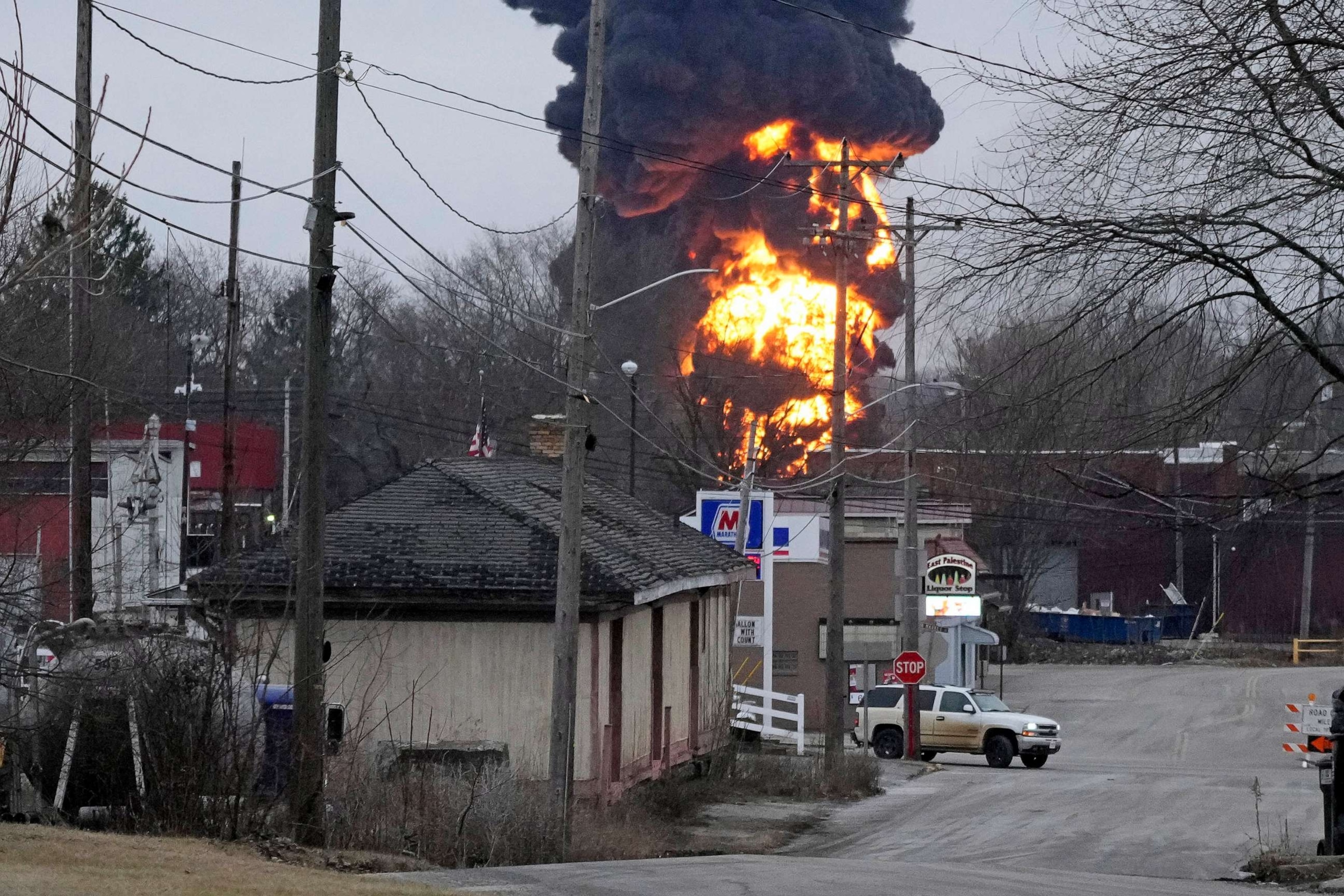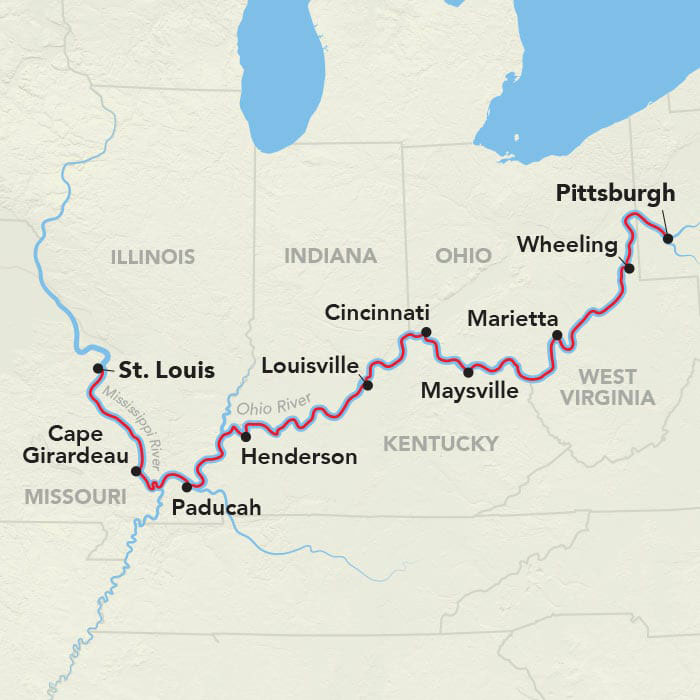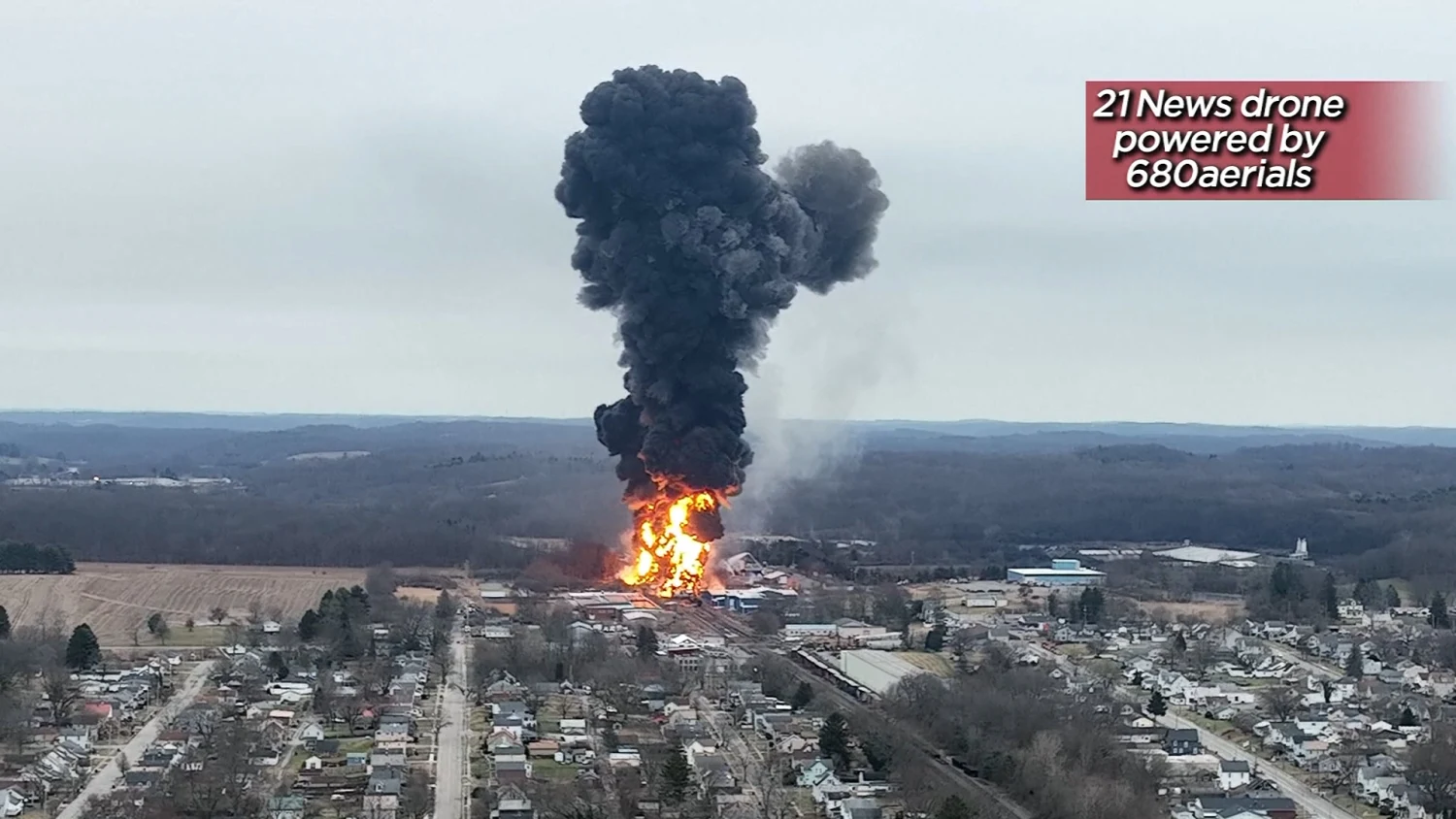The train that derailed in East Palestine, Ohio, on Feb. 3 was filled with several hazardous chemical compounds, documents from the railway company show including the residue of one that is known for its link to genetic mutations. Is the water in the Ohio River contaminated?
Updated on February 14, 2023, 7:48 PM- Waterways along Ohio River still contaminated following train derailment carrying hazardous materials: Officials Waterways along the Ohio River are still contaminated with hazardous materials following a train derailment that spilled multiple toxic chemicals.
The Norfolk Southern Railroad train derailed in East Palestine, Ohio, on Feb. 3 2023while traveling from Illinois to Pennsylvania. It contained several types of hazardous materials, such as vinyl chloride, a highly volatile colorless gas produced for commercial uses, as well as ethylene glycol monobutyl ether, ethylhexyl acrylate, and isobutylene,
Is the Water in the Ohio River Contaminated
Waterways along the Ohio River are still contaminated with hazardous materials following a train derailment that spilled multiple toxic chemicals, but officials are confident that those waterways are contained and not affecting water supplies, they announced during a press conference on Tuesday.
Four tributaries over a space of 7.5 miles are contaminated, director of the Ohio Department of Natural Resources Mary Mertz told reporters during a news conference on Tuesday.
According to ABC News- Following a train derailment in East Palestine, Ohio, on February 3, 2023, waterways along the Ohio River were contaminated with hazardous materials. The derailed train carried several toxic chemicals, including vinyl chloride, ethylene glycol monobutyl ether, ethylhexyl acrylate, and isobutylene. However, officials are confident that these waterways are contained and not affecting water supplies. Here are some key points:
- Contaminated Areas: Four tributaries spanning 7.5 miles are affected by the contamination, resulting in the deaths of at least 3,500 fish. Officials have identified 12 different species of dead fish, but none of these species are threatened or endangered. Non-aquatic species do not appear to be impacted.
- Plume Tracking: Health officials are tracking a plume filled with contaminants currently floating down the Ohio River at about one mile per hour. As of now, it is near Huntsville, West Virginia. The contamination primarily consists of fire-contaminant combustion materials.
- Drinking Water: While there are very low levels of volatile organic compounds in the Ohio River itself, these levels appear to be diluted and are not affecting the drinking supply for residents. Officials are confident that these low levels are not being passed on to customers
In summary, although the waterways remain contaminated, measures are in place to prevent further spread and protect water supplies. Residents can continue to rely on their drinking water without significant impact from the derailment
How Many People Drink From the Ohio River
The Ohio River is the source of drinking water for more than five million people. More than 25 million people, almost 10% of the US population, live in the Ohio River Basin.

More than five million people whose drinking water comes from the Ohio River could see a plume of toxic chemicals flowing toward their local water intakes after a train derailment on the border between Ohio and Pennsylvania led to a toxic spill.
The train that derailed in East Palestine, Ohio, on Feb. 3, 2023, was filled with several hazardous chemical compounds, documents from the railway company show including the residue of one that is known for its link to genetic mutations.
The EPA detected low levels of butyl acrylate and ethylhexyl acrylate in Leslie Run on February 10. Butyl acrylate had dissipated to non-detectable levels by the time the water reached the north fork of Little Beaver Creek and the Ethylhexyl acrylate by Little Beaver Creek. EPA said no vinyl chloride a known carcinogen had been detected in the waterways.
During the initial phase of the incident which saw emergency responders forced to burn vinyl chloride off to avoid an explosion—toxic chemicals seeped into the nearby Sulphur Run waterway and made their way downstream into the Ohio River, Environmental Protection Agency (EPA) officials said on Tuesday.
- Vinyl chloride.
- Butyl acrylate.
- Ethylhexyl acrylate.
- Ethylene glycol mono butyl ether.
- Isobutylene.

The EPA, which is investigating the release of hazardous substances, has noted the release of these chemicals into the air, surface soils, and surface waters at the derailment site. Materials have entered waterways near East Palestine, including Sulphur Run, Leslie Run, Bull Creek, North Fork Little Beaver Creek, Little Beaver Creek, and the Ohio River, as well as storm drains, according to the agency.
Vinyl chloride
Of the cars that turned over, five contained vinyl chloride, a manmade chemical used to make plastic products. Manufacturers convert vinyl chloride to polyvinyl chloride, also called PVC or just vinyl, a hard plastic resin used to make things like pipes, packaging materials, and wire coatings, per the National Institutes of Health.
The EPA classifies vinyl chloride as a known human carcinogen. Inhaling the chemical has been shown to increase the risk of angiosarcoma, a rare form of liver cancer, in humans and in animal studies, per the EPA. Vinyl chloride is a highly flammable colorless gas with a mild, sweet odor, which means people who breathe in the gas won’t be aware of its toxicity.
Butyl acrylate
Found in one train car, butyl acrylate is a clear colorless liquid with a sharp, distinct smell less dense than water, which can form a surface slick on the water, according to the National Library of Medicine. The chemical is used for making paints, coatings, caulks, sealants, and adhesives. The chemical found on the train car has been completely lost due to a spill and fire, according to a list of affected train cars posted by Norfolk Southern.
Benzene
Two cars that derailed contained benzene, an industrial chemical found naturally in crude oil, gasoline, and cigarette smoke. Manufacturers frequently use it to make plastic, synthetic fibers, rubbers, detergents, and dyes, according to the CDC.
Like vinyl chloride, the EPA classifies benzene as a known human carcinogen. Benzene has been in the news recently after several big cosmetic companies recalled dry shampoos contaminated with the chemical.
Ethylhexyl acrylate
One car contained ethylhexyl acrylate, a clear colorless liquid with a pleasant odor and vapors heavier than air. The chemical is used in making water-based paints, coating materials, adhesives, printing inks, and plastics. Inhalation and ingestion of concentrated ethylhexyl acrylate vapor can cause drowsiness and convulsions, while its liquid form can cause irritation of the eyes and may irritate the skin on prolonged exposure.
As of Sunday, the amount of ethylhexyl acrylate in the train car is still pending.
The one train car that was carrying ethylhexyl acrylate during the accident was breached and the amount of product that is still in the car is marked as “pending.” Ohio EPA Division Chief Tiffany Kavalec said Tuesday that this substance, along with butyl acrylate, was found in “low levels“ in local waterways last week.
Ethylene glycol mono butyl ether (EGBE)
One car contained ethylene glycol monobutyl ether, which is a colorless liquid with a mild smell. The chemical is used in glass and leather cleaners and as a solvent in paints, coatings, inks, and household cleaners. Ethylene glycol monobutyl ether irritates the skin and eyes and may be toxic if ingested. Contact and ingestion can cause headaches, nausea, vomiting, and dizziness. Occupational exposure can be high in silk screen printing.
Isobutylene
One train car contained isobutylene, a gas used in antioxidants – including food, packaging, supplements, and plastics – butyl rubber and in the production of high-octane plane fuel. The chemical, which is heavier than air, is shipped as a liquefied gas under its own vapor pressure, which can cause frostbite and easily ignite. Its container may rupture violently and rocket under prolonged exposure to fire or heat.
Where Does the Ohio River Start and End
In the Hills of Pennsylvania, wet trails turn into brooks and streams so small they are hard to trace but all meet with each other to then turn into bigger streams and springs that eventually appear as a river.

These are headwaters of The Ohio River located near Coudersport, Pennsylvania. The Allegheny River with its source in Allegheny Township in Pennsylvania joins a secondary source the Monongahela River at Fairmont, West Virginia.
The Allegheny River joins the Monongahela near Pittsburgh to form the Ohio River. This is the famous Three Rivers of Pittsburgh where the Allegheny and Monongahela Rivers meet to form the Ohio River.
- The Monongahela River runs 128 miles and is one of the few major navigable rivers in the world that runs north. It starts at Fairmont, West Virginia, and flows north into Pennsylvania. Monongahela is derived from a Native American Word meaning “high banks or bluffs”
- The Allegheny River runs 325 miles from Porter County, PA into New York state, and back into Pennsylvania. The name comes from the Lenape Native Americans and is commonly believed to mean “fine river”.
- The Ohio River runs 981 miles ending at Cairo, IL, and is the largest tributary to the Mississippi River. The name comes from an Iroquoian word meaning “great river”.
The Ohio River is 981 miles (1582 km) long, starting at the confluence of the Allegheny and the Monongahela Rivers in Pittsburgh, Pennsylvania, and ending in Cairo, Illinois, where it flows into the Mississippi River.
- The Ohio River flows through or borders six states: Illinois, Indiana, Kentucky, Ohio, Pennsylvania, and West Virginia. In addition, water from parts of New York, Virginia, North Carolina, Tennessee, Maryland, Mississippi, Georgia, and Alabama drain into tributaries that empty into Ohio.
- The Ohio River is the source of drinking water for more than five million people.
- More than 25 million people, almost 10% of the US population, live in the Ohio River Basin.
How Many States Does the Ohio River Go Through
- The Ohio River flows through six states and collects drainage from 15 states.
- The Ohio River is already considered a risk as one of the most polluted rivers in the United States.
- Many fish species living in the Ohio River are in danger of extinction.
More than 25 million people in 11 different states call the Ohio River watershed home. The issues impacting the watershed’s environmental and human health are varied, but focused attention by citizens, government, agriculture, and industry can protect and improve its condition, now and in the future.
The Ohio River and its watershed have seen significant improvements in water quality and health since the Clean Water Act and other laws were enacted in the 1970s. However, the river faces many new and complicated challenges.
Conclusion:
The train that derailed in East Palestine, Ohio, on Feb. 3 was filled with several hazardous chemical compounds, documents from the railway company show including the residue of one that is known for its link to genetic mutations. Is the water in the Ohio River contaminated?
No, as of, 2/18/23 The Greater Cincinnati Water Works tested approx. 148 H2O samples from the date of the derailment at GCWW’s Ohio River water intake. No detectable levels have been found. The testing involved 4 chemicals
Butyl acrylate
Vinyl chloride
Ethylene glycol mono butyl ether
Ethylhexyl acrylate
The contaminants that were leaked in East Palestine Ohio are being tracked by officials at the Ohio EPA as they move downstream through the Ohio River Basin at approximately 1 mph. Water testing on samples collected from five locations below the McAlpine Dam on Tuesday, April 4, and Wednesday, April 5, again showed no detectable presence of methanol in the Ohio River. Water testing on samples collected from five locations below the McAlpine Dam on Tuesday, April 4, and Wednesday, April 5, again showed no detectable presence of methanol in the Ohio River. The Ohio River is the source of drinking water for more than five million people. More than 25 million people, almost 10% of the US population, live in the Ohio River Basin.

References:
CBS Philadelphia-Here are some of the hazardous materials on the train that derailed in Ohio
Columbus Dispatch Newspaper-What are vinyl chloride and isobutylene? More about the chemicals released in Ohio train derailment
Newsweek- from article 2/15/2023- Ohio Toxic Spill Risks Contaminating Local Water Supplies for 5M People
